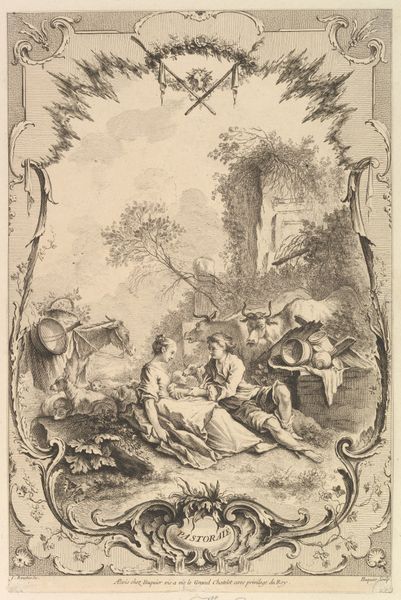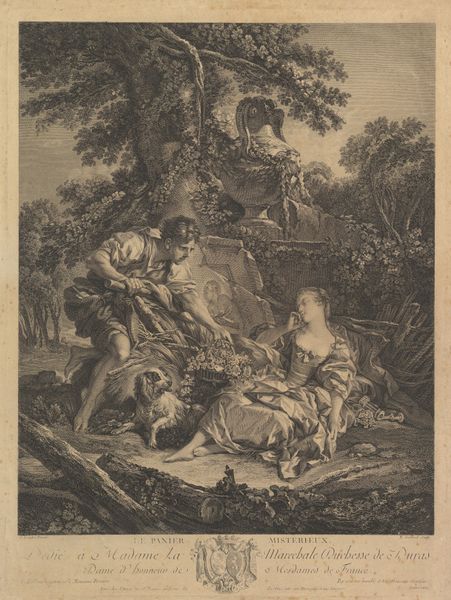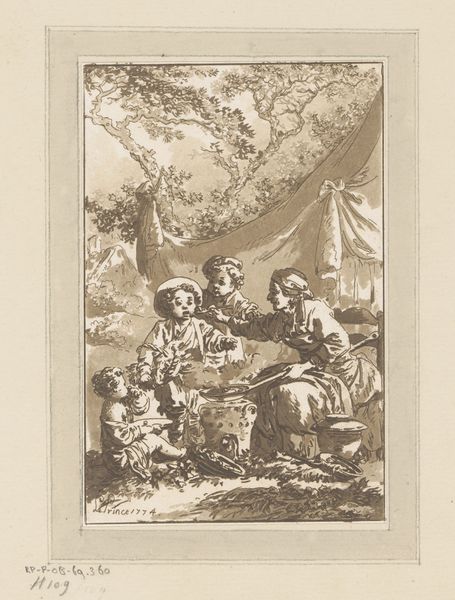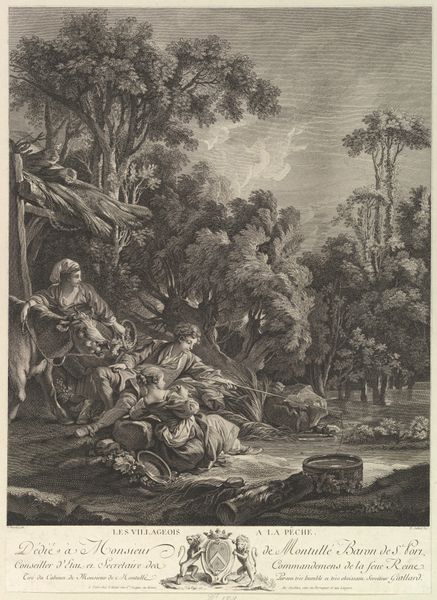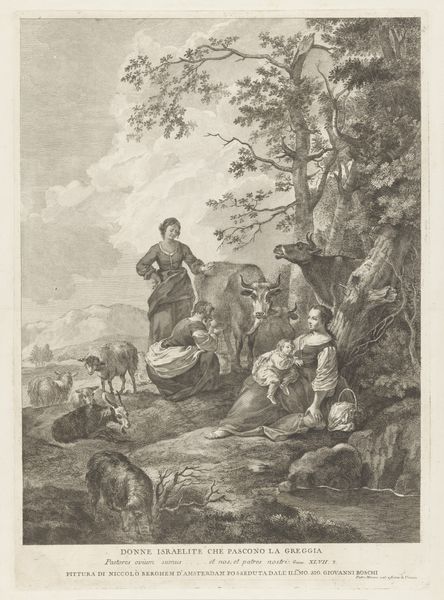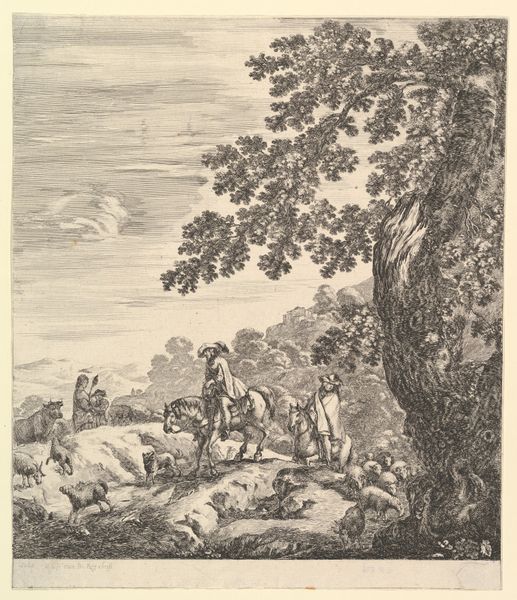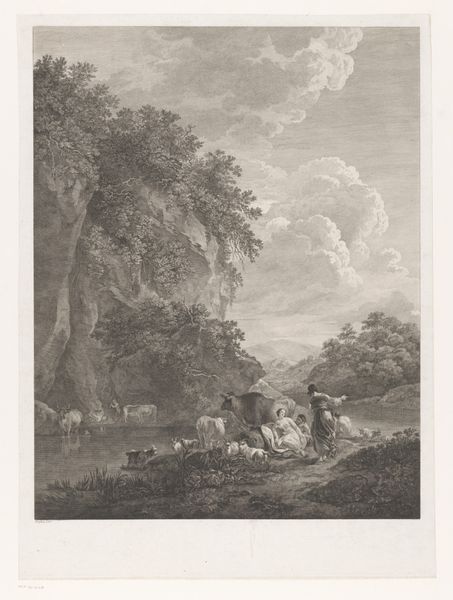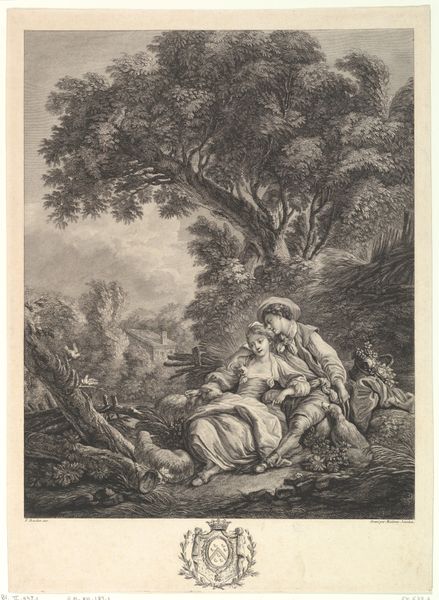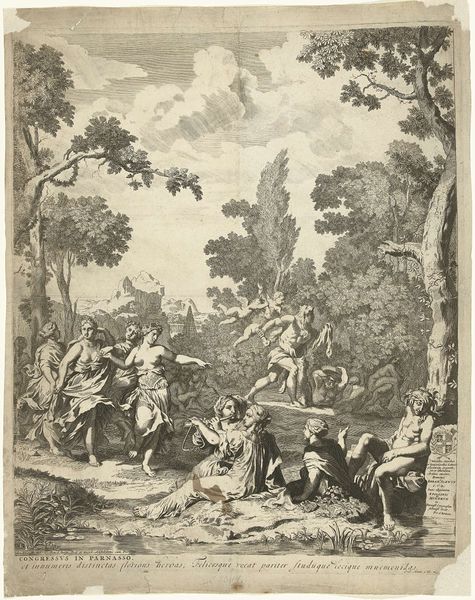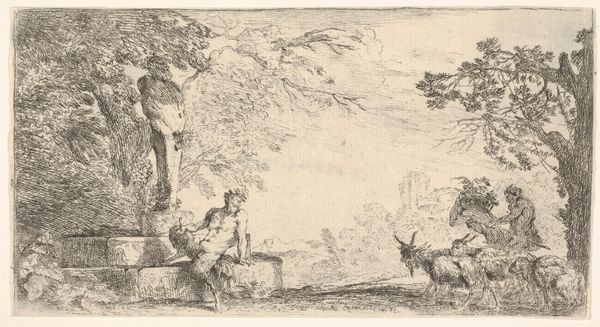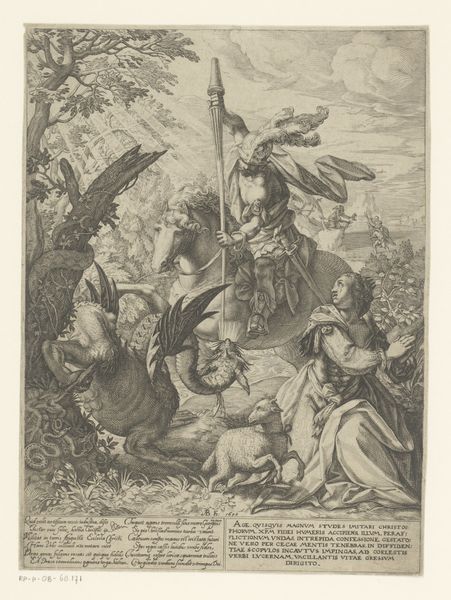
etching
#
vegetal
#
countryside
#
etching
#
landscape
#
natural composition
#
nature colouring
#
figuration
#
nature
#
naturalistic tone
#
nature environment
#
genre-painting
#
natural palette
#
warm natural lighting
#
natural environment
#
rococo
Dimensions: height 296 mm, width 243 mm
Copyright: Rijks Museum: Open Domain
Editor: This is Jean-Baptist Leprince’s "Landschap met musicerende herder en twee herderinnen," an etching from 1769. I find the scene quite idyllic and almost dreamlike. The tones are so soft. What’s your interpretation? Curator: It’s a wonderful example of the Rococo fascination with pastoral themes. Consider the historical context: this image romanticizes rural life just as France was on the cusp of significant social upheaval. How might this idealized vision have served the elite classes who were Leprince's primary patrons? Editor: So, the print almost becomes propaganda? Curator: Propaganda might be too strong a word, but it certainly reflects a particular worldview. Look at the leisurely poses of the figures and the attention to decorative detail— the birdcage, the draped fabrics, even the elegant curls. It's all very artificial, a curated fantasy of nature. Do you notice any other details that feel staged rather than realistic? Editor: Now that you mention it, even the livestock seems carefully posed! It makes me wonder about the actual experiences of people working the land at this time. This feels very removed. Curator: Exactly. Leprince's etching invites us to consider whose vision of reality is being presented and what that tells us about the society that produced and consumed it. The etching, like the Rococo movement, shows artifice in social, political, and aesthetic ideals. Editor: I never thought about it that way, so that helps me to question idealized beauty, especially in prints like these, with themes of power and status mixed in. Thank you for offering your viewpoint! Curator: My pleasure! It’s always rewarding to view art through new lenses.
Comments
No comments
Be the first to comment and join the conversation on the ultimate creative platform.
